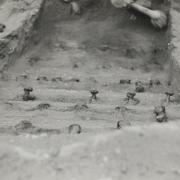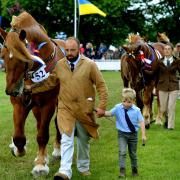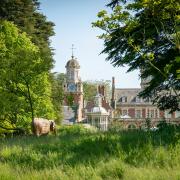It’s that time of year, when birds migrate across the world to find better feeding grounds and escape extreme freezing temperatures.
Picture this... a misty October morning, you're walking by a beautiful wetland in the countryside that's bathed in the glow of watery autumn sunshine. It’s a quiet and serene moment, then suddenly, from your left, you see a small flock of Whooper Swans flying towards you, effortlessly guiding themselves to land in the water.
Using their webbed feet as brakes, they make contact with the surface. With a bit of a splash and a flap of their wings, they come to a gradual stop. But it isn’t just a few swans; suddenly there are more, and more, until 30, 60, 100 or more have landed, a sociable gaggle of brilliant white plumage, and yellow and black beaks as far as the eye can see.

They greet each other with a distinct ‘honk honk’ sound, often called ‘bugling’, as if to say 'We’re here at last!', as they finally arrive, exhausted, at their winter destination. Eventually the flock will swell to several hundred, as these arrivals join the resident Mute Swans on the reserve. This is just a small part of the winter migration of birds to Suffolk’s RSPB Lakenheath Fen.
Those who have witnessed it say it is quite a spectacle. As part of their annual migration, the Whooper Swans have flown hundreds of miles from their Icelandic breeding grounds to spend the winter here, where they can find good food sources and a slightly warmer climate, making the harsh winter months ahead more bearable. Due to the vast reedbed wetland and grazing marshes at the reserve, food can be found in abundance. There is more than enough food to sustain this flock, and many more species besides.
Whooper Swans aren’t the only birds to migrate; in fact about 40 per cent of the world’s birds migrate during the year, some travelling thousands of miles. They navigate their way to their destination, either by what they see – landmarks, rivers, stars – or using the Earth’s magnetic field, by smell or just following other birds. Of course, we do have species that stay here all year round, but the UK population of many bird species changes with the seasons.


Lakenheath Fen reserve is a bit of a magnet for wildfowl during the winter months; many species of duck migrate here from a mix of places including the Arctic, Scandinavia, Greenland, Northern Europe, Iceland, Siberia and Russia, many returning year after year. Wigeon, Teal, Gadwall, Mallard, Shoveler and Tufted Duck can all be found either dabbling for food in the grazing marshes or diving in the wetlands.
Back on dry land, Siskin numbers increase due to the migration from Europe and from more local coniferous woodlands where they have bred and raised young during the summer. These lively green, yellow and black stripey birds mix in flocks with Lesser Redpoll to feed on seed at the nature reserve’s visitor centre and nearby Alder trees.



From November onwards, two birds that many of us associate with winter migration arrive on site. Flying in from Scandinavia and Iceland, Redwing and Fieldfares are members of the Thrush family. Large flocks of them can be seen feasting on berries from hedgerows and trees, consuming any windfall fruit they may happen across as they go.
It would be wise for many of these smaller birds to keep one eye out for danger when stocking up for winter, as the reserve welcomes a number of notable birds of prey during the winter months. Merlin are the UK’s smallest bird of prey and a few may arrive at the nature reserve in their search for winter feeding grounds and warmer temperatures. A number migrate south from UK uplands, but winter numbers are also boosted by Icelandic populations. Merlin are a Red Listed species, meaning their population numbers are in critical decline and most in need of our help.


Another Red Listed raptor moves into the reserve during the winter months from heather moorlands and uplands in the north of the UK, the majestic Hen Harrier. Such a special and rare sight, the pale grey male is nicknamed ‘the ghost of the moor’ due to its haunting colouring and habit of drifting low, silent and slowly over its hunting sites.
The arrival of winter birds to the reserve is always a highlight in our calendar. Considering that, prior to 1995, the land that Lakenheath Fen occupies was once fields where carrots were grown, it's amazing to think it's now a vital service station for many migrating birds during the winter months. Some birds stay the whole winter, some just stop to fuel up as they pass by, attracted by more than 400 hectares of reedbed, ungrazed fenland and wet grassland.

The reserve will be able to accommodate even more migrating birds in the future. A recent partnership agreement between RSPB Lakenheath Fen and Morgan Sindall Group, a leading UK construction and regeneration group, will see the nature reserve flourish further after completion of a nearby land acquisition securing an additional 54 hectares of land. Over time, this land will be turned into more wetland habitat, greatly expanding the nature reserve, creating more habitat for wildlife and helping to absorb carbon emissions in the area.
So, do visit and experience this magical season of migration first hand this winter. To find out more about Lakenheath Fen and family friendly events throughout the season, visit rspb.org.uk/lakenheath
Find out more about the RSPB's other seven Suffolk nature reserves and their winter visitors at bit.ly/RSPBSuffolkReserves



























